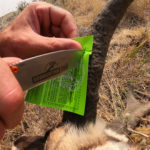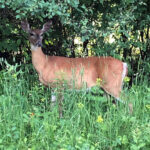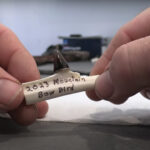The month of August has arrived, and bowhunters are in full-blown prep mode for the velvet buck hunting seasons that’ll be kicking off in the weeks and months ahead.
Casual afternoon archery sessions have turned into serious fine tuning of our bows and the gear that’ll go with it. It’ll be here before you know it! Here’s a look at what you need to know as you prepare for hunting velvet bucks this season.
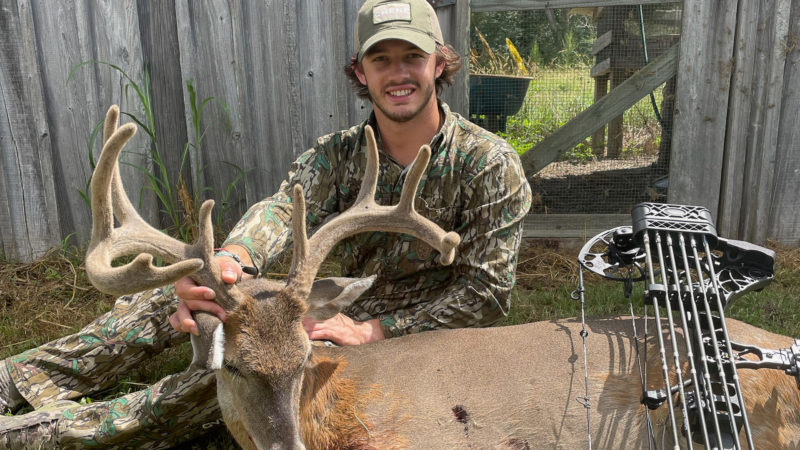
Scout from a Distance
In an effort to help your deer herd maintain the pattern they’ve been frequenting in recent weeks, it’s important to scout from a distance. That means more time behind the glass and less time stomping through the woods. Deer are likely bedded very close to the fields you’re watching them feed in every afternoon.
In fact, there’s a good chance that they’re bedding in the beans, taking advantage of the cool dirt, shade, and a smorgasbord of food. They don’t have to go far. Walking into the woods will most likely do more harm than good.
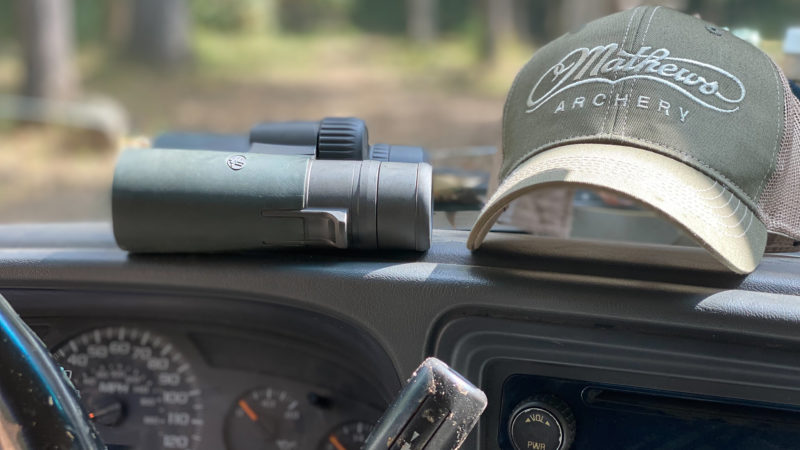
Use Cellular Trail Cameras
Replace your standard trail cameras with cellular trail cameras to minimize your human pressure in the woods. With gas prices as high as they are, this may be the best option for your budget as well. Regardless, the ability to take inventory without setting boots on the ground each week is priceless for knowing exactly where the action is happening on the properties you hunt.
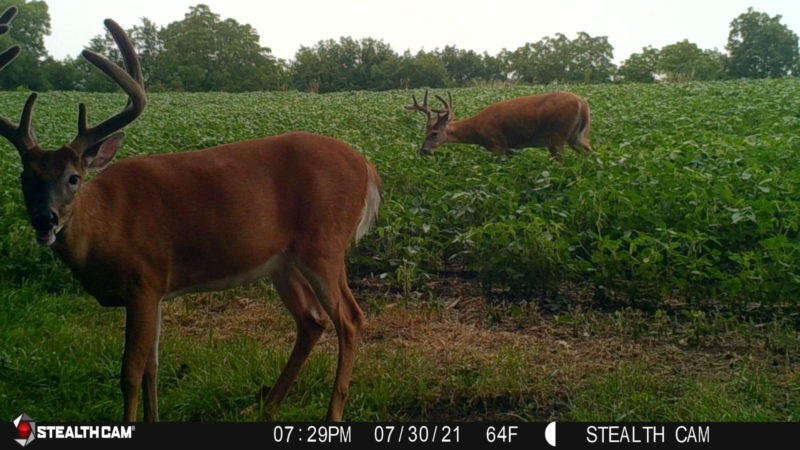
Broaden Your Search
Be sure to look beyond the obvious choices when scouting for your velvet buck. Keep in mind, the bean field you found and glassed bucks in last summer is likely a corn field this year. You’ll want to dig a little deeper to find the rotation that allows you to glass bucks in the beans.
This may mean knocking on doors of neighboring farms for permission, or taking a different approach on the properties you do have. Bucks will follow the food. When you follow their lead, you’ll be able to stay with the action, even when they widen or change their feeding patterns.
Watch for the Shift in Patterns
I killed a Kentucky velvet buck several years ago while hunting with friend and hunting industry colleague, Will Brantley. Brantley has been hunting velvet bucks for years and knows how to make it happen when it comes to getting these bucks in bow range for friends, family, and clients.
Prior to my hunt, Brantley showed me some photos of an old buck that he’d been keeping an eye on all summer long. The buck was consistently showing up on camera every day. However, in the days leading up to the hunt, the buck became inconsistent in his behavior patterns. “We haven’t seen him on camera the last few days, but he’s due to show up any time,” said Brantley. That’s all I needed to hear before climbing into the stand on the opening evening of the Kentucky bow season.
Several hours later, I punched my tag on that very buck as he rotated back through the area and showed up at my stand. It was a good example of how some bucks will have a subtle shift in their behavior pattern prior to the major shift that comes when their velvet comes off.
Make it Count on the First Sit
You’ve likely heard it for years – the best time to kill a buck is on your first sit at that location. It’s a common truth that deer hunters live by every season. But it’s never more obvious than when it comes to hunting velvet bucks in the final days of summer. Every additional hunt after the first only adds to the human pressure that pushes deer on to neighboring property.
The first sit allows you to hunt without human pressure applied to the herd. Play your cards right and the deer will be oblivious to your presence in the woods. He’ll never know what hit him. The first sit is indeed the best sit. Be ready to make it happen.
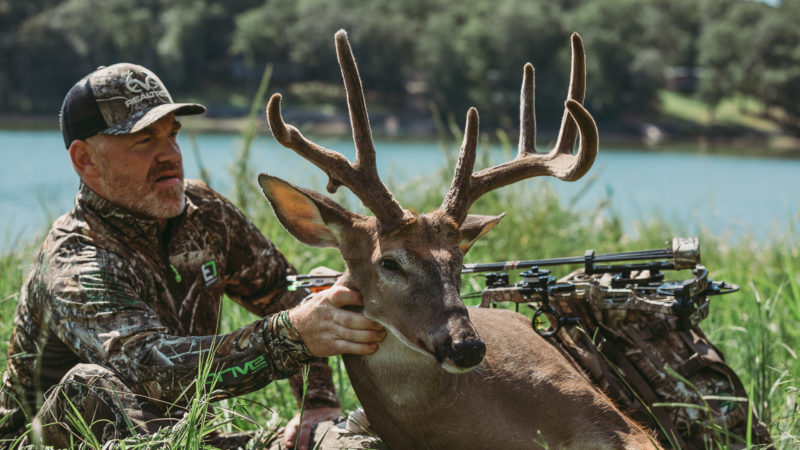
The Velvet to Hard-Horn Shift
As mentioned above, there’s a major shift that immediately comes when a buck strips his velvet. He’s a different beast with freshly polished antlers. His behavior patterns will change in an instant. His attitude toward the rest of the herd changes, and where he shows up on trail camera can often change as well.
That’s why it’s so important to capitalize on that first sit in the tree. There’s a short window of opportunity to make it happen before your buck that’s cool and consistent becomes a ghost in the weeks ahead.
How to Handle Your Velvet Buck after the Shot
You killed a velvet buck – now what? Here’s a look at Brantley’s top tips for how to handle your velvet buck once you’ve notched your tag.
- Wear gloves and a long-sleeve shirt when handling, gutting, and photographing your deer. The ticks can be awful at this time of year and will quickly transition from the deer’s body and antlers to the hunter.
- Hold buck by neck, not antlers, for photos (velvet peels off very easily at this time)
- Wrap velvet antlers in bubble wrap and secure with tape or zip ties to protect velvet for transport.
- Go overboard with care of velvet antlers. Minimal contact is a must.
- Get velvet antlers in the freezer as quick as you can.
- Have a plan for the taxidermist. Not every taxidermist will handle a velvet buck.
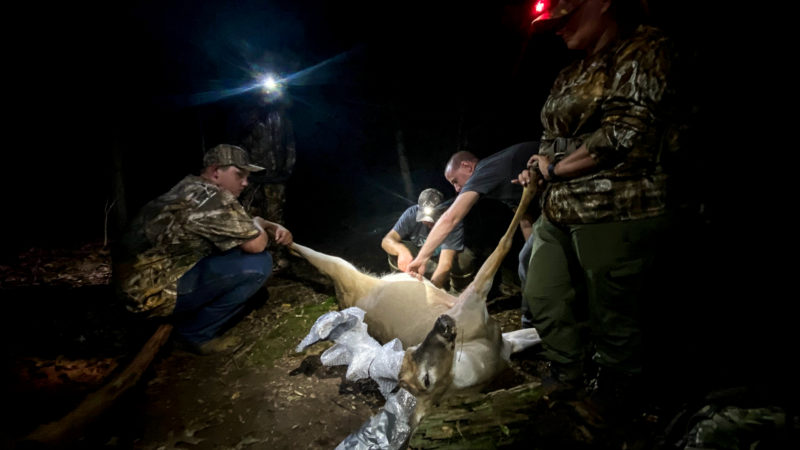
Whether you’re hunting velvets bucks for the first time, or you’ve been chasing them for years, be sure to keep the items mentioned above in mind in the days leading up to the velvet season. A velvet buck is a unique trophy that comes for a limited number of hunters each year.
Will you be in that small percentage of hunters that finds success on a velvet buck this season?

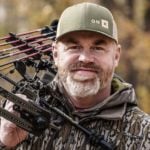 By
By 